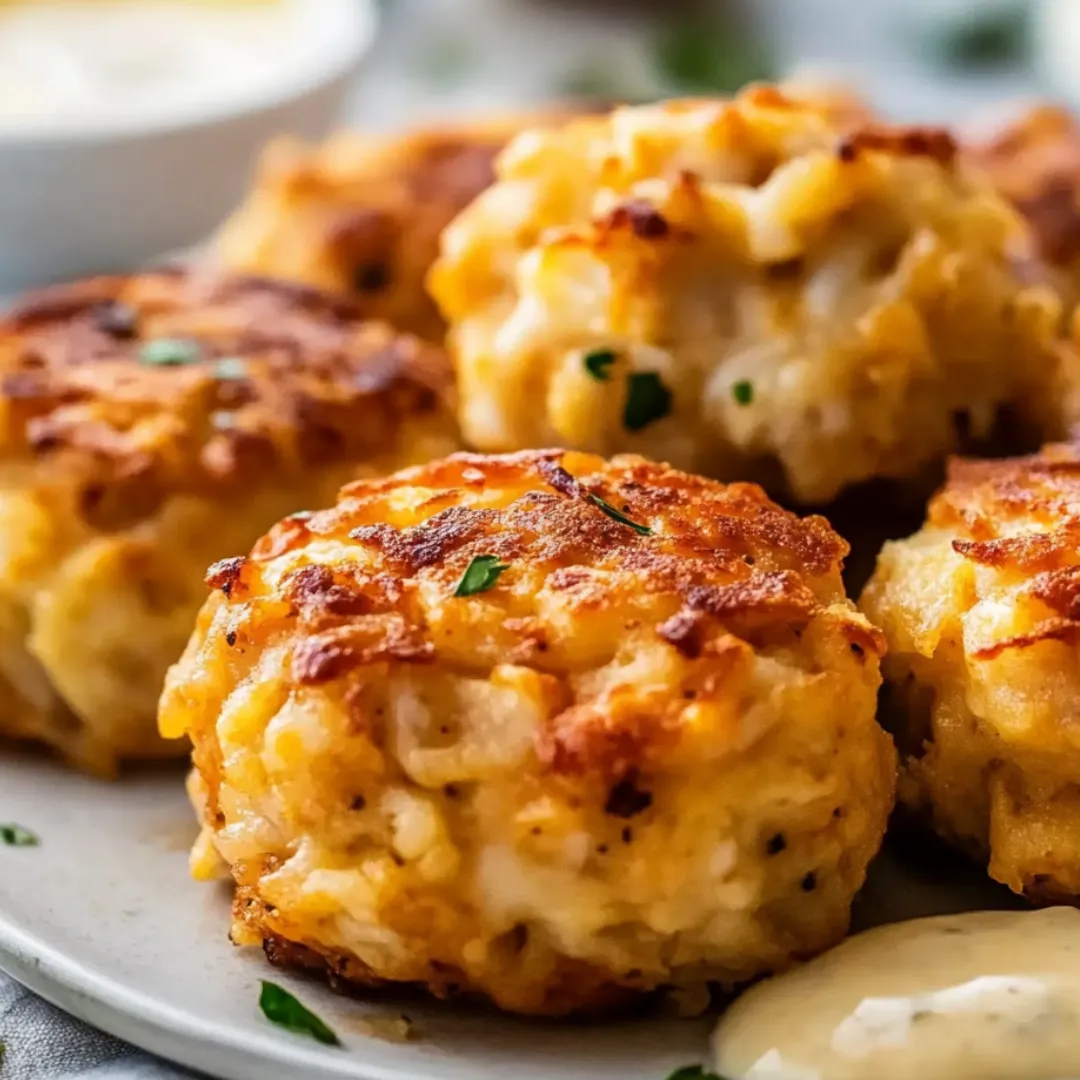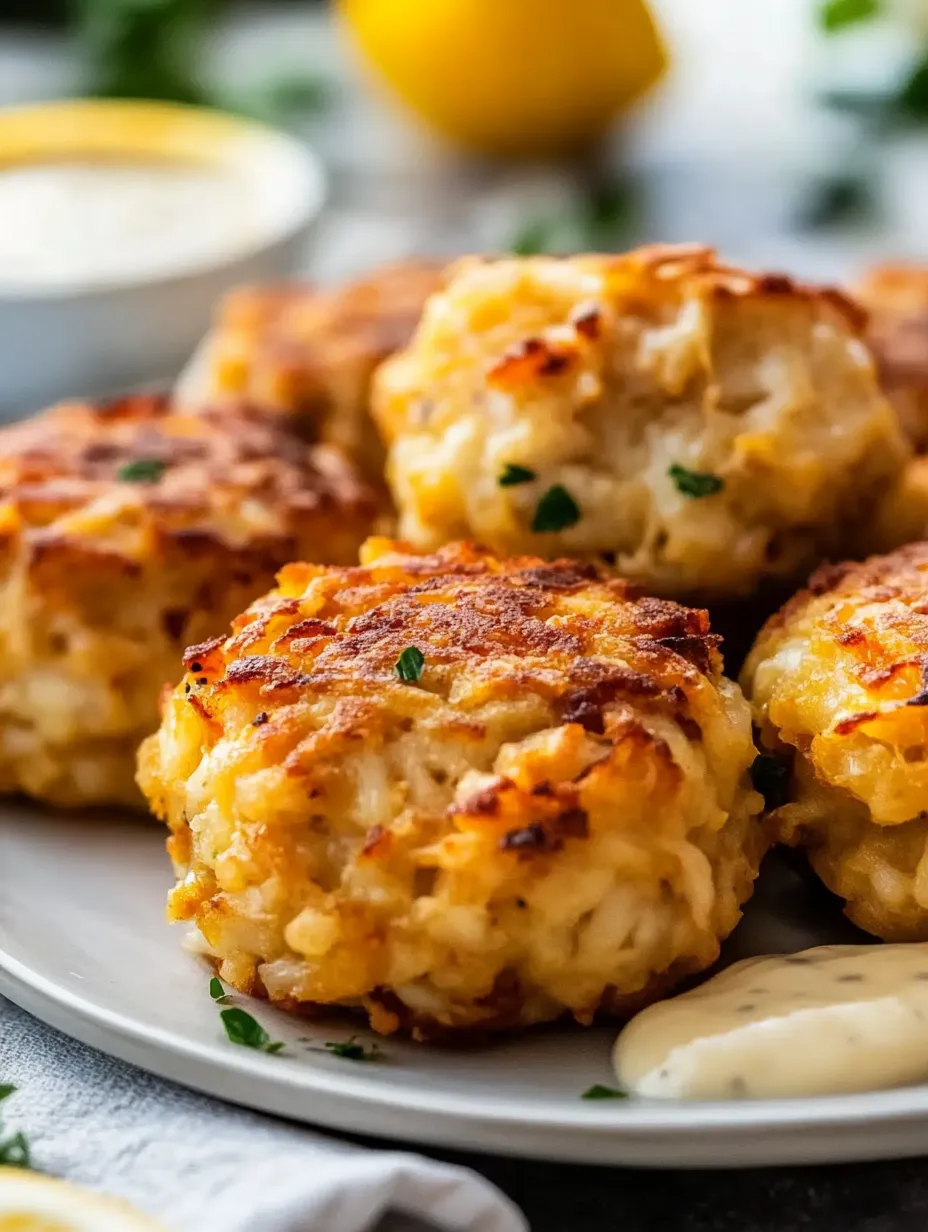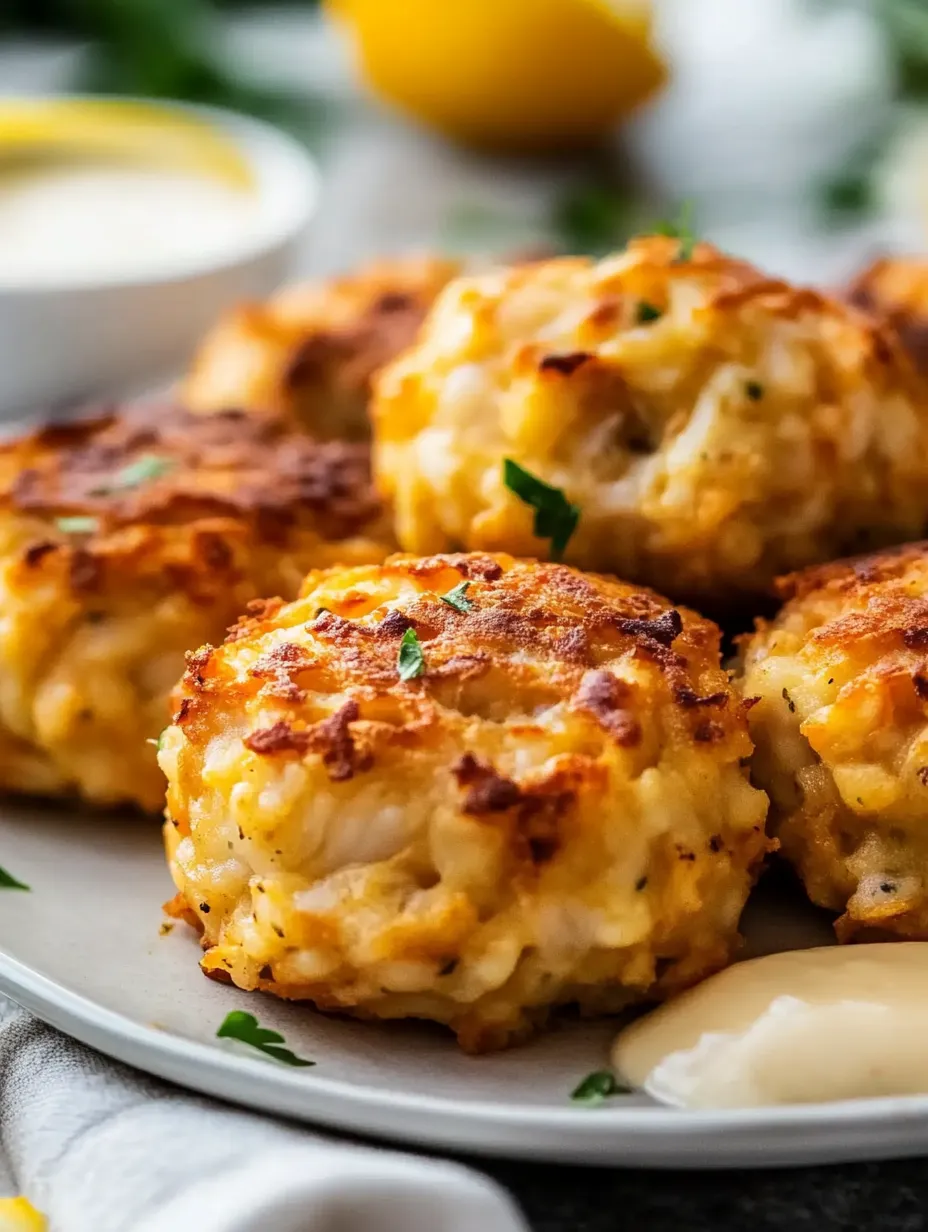 Pin it
Pin it
These classic Maryland crab cakes celebrate the sweet, delicate flavor of lump crab meat with minimal fillers and just the right amount of seasoning. Each golden, crispy-edged cake showcases generous chunks of premium crab bound together with a light mixture that enhances rather than masks the star ingredient. Originating from the Chesapeake Bay region, these crab cakes represent coastal Maryland's proud seafood tradition—simple preparation that lets the natural sweetness of fresh blue crab shine through in every bite.
I first made these crab cakes after a memorable trip to Maryland's Eastern Shore, where I tasted what real crab cakes should be—mostly crab with just enough binder to hold them together. When I served them at a dinner party last summer, my guests were amazed at how different they were from the bready versions they'd had elsewhere. One friend from Baltimore declared them "exactly like home" and insisted on watching me make the next batch to learn the technique herself.
Ingredients
- Lump crab meat: The foundation of exceptional crab cakes. Fresh Maryland blue crab provides the sweetest flavor and ideal texture, but other lump crab meat can work well. Always pick through it carefully to remove any shell fragments.
- Mayonnaise: Creates a creamy binder that helps hold the cakes together. Use real mayonnaise rather than salad dressing for clean flavor that doesn't compete with the crab.
- Egg: Provides structure and helps the crab cakes maintain their shape during cooking. A fresh, large egg works best for proper binding.
- Dijon mustard: Adds a subtle tangy note that complements the sweetness of the crab. Smooth, not grainy, Dijon offers the best texture for the binding mixture.
- Old Bay seasoning: The signature Maryland spice blend that's essential for authentic flavor. This iconic mix contains paprika, black pepper, celery salt, and other spices that perfectly enhance seafood.
- Worcestershire sauce: Contributes depth with its savory, slightly tangy profile. Just a small amount adds complexity without overwhelming the delicate crab.
- Saltine crackers: The traditional filler that provides just enough structure without adding heaviness. Crush them finely but not into dust for the ideal texture.
 Pin it
Pin it
Instructions
- Create the perfect binding mixture:
- In a large bowl, whisk together ½ cup of mayonnaise, one beaten egg, 1 teaspoon of Dijon mustard, 1 teaspoon of Worcestershire sauce, 1 tablespoon of fresh lemon juice, and 1 teaspoon of Old Bay seasoning until completely smooth. This careful blending ensures that all the flavors will be evenly distributed throughout your crab cakes. The mixture should have a uniform consistency without any streaks of egg or mayo. Add 1 tablespoon of finely chopped fresh parsley and mix again. This binding mixture is crucial—it needs to be just enough to hold the crab together without becoming the dominant flavor or texture.
- Incorporate the crab meat with a gentle touch:
- Add 1 pound of lump crab meat to the binding mixture, handling it with extreme care. Instead of stirring, use a folding motion with a rubber spatula or your hands, gently lifting from the bottom and turning the mixture over. This preserves those precious lumps of crab that give authentic Maryland crab cakes their distinctive texture. Too much mixing will break up the lumps and result in a pasty texture. After the crab is incorporated, sprinkle ½ cup of crushed saltine crackers over the mixture and fold them in just until combined. The mixture should be barely held together—still showing distinct lumps of crab.
- Form and chill the crab cakes:
- With clean, slightly dampened hands to prevent sticking, gently portion the mixture into 4-6 equal mounds. Very lightly press and shape each portion into a cake about 1 inch thick with a flat top and slightly rounded edges. Don't compact or press them firmly—the cakes should remain somewhat loose while still holding their shape. Place the formed cakes on a parchment-lined baking sheet and refrigerate for at least 30 minutes, or up to 4 hours. This chilling time is essential as it allows the binding agents to set, helping the cakes maintain their shape during cooking and preventing them from falling apart in the pan.
- Master the perfect cooking technique:
- For traditional pan-frying, heat 2 tablespoons of unsalted butter and 2 tablespoons of vegetable oil in a heavy skillet over medium heat until shimmering but not smoking. The combination of butter and oil provides rich flavor while preventing burning. Carefully place the chilled crab cakes in the pan, leaving space between them. Cook undisturbed for 3-4 minutes until the bottom develops a deep golden-brown crust. Gently flip each cake using a wide spatula, supporting the entire cake during the turn to prevent breaking. Cook the second side for an additional 3-4 minutes until equally golden and the internal temperature reaches 155°F. The cakes should develop a crisp exterior while remaining moist inside.
I learned about the importance of gentle handling after my first attempt at this recipe resulted in crab cakes that were too uniform in texture. A fishmonger in Annapolis later explained that each fold of the mixture should be done with the care of turning the page of an ancient book—minimal disturbance preserves those beautiful lumps of crab that create the distinctive texture. Now I count my folding motions, limiting myself to no more than 10 gentle folds, which consistently produces the perfect texture.
Serving Suggestions
For a classic Maryland presentation, serve these crab cakes with a wedge of lemon and a small dish of tartar sauce or remoulade on the side. While some restaurants automatically cover crab cakes in sauce, true connoisseurs know that quality cakes need minimal accompaniment that doesn't overpower the delicate crab flavor.
Create an elegant dinner by serving a single large crab cake atop a bed of mixed greens dressed with light lemon vinaigrette. The acidic notes of the dressing complement the richness of the crab cake beautifully.
For a more casual approach, place a crab cake on a toasted brioche bun with a thin slice of tomato, a few leaves of butter lettuce, and a small spread of lemon aioli for an upscale sandwich experience. Traditional sides like coleslaw or corn on the cob complete this quintessential summer meal.
 Pin it
Pin it
Regional Variations
While this recipe represents the classic Maryland style, regional variations exist even within the Chesapeake area. Eastern Shore versions often include a touch more Old Bay seasoning, while Baltimore-style cakes might incorporate a small amount of finely diced red bell pepper for color and sweetness.
Some Maryland families pass down recipes that include a dash of dry mustard powder in addition to the Dijon, creating a more complex mustard profile. Others add a few drops of hot sauce to the binding mixture for a subtle heat that develops as you enjoy the crab cake.
For a modern twist that still honors tradition, some chefs replace the crushed saltines with panko breadcrumbs, which provide a lighter texture while still allowing the crab to dominate. This adaptation works well for those who prefer a slightly crispier exterior.
After preparing countless crab cakes over the years, I've discovered that the temperature of your hands when forming the cakes makes a noticeable difference. Cold hands help prevent the butter in the mixture from melting prematurely, which can lead to denser cakes. I now run my hands under cold water and dry them thoroughly just before forming each batch of crab cakes. This simple technique, combined with the chilling time, ensures that the cakes maintain their structure during cooking while still achieving that ideal contrast between the crispy exterior and tender, moist interior that makes Maryland crab cakes so beloved.
Frequently Asked Questions
- → What type of crab meat is best for Maryland crab cakes?
- Fresh lump meat from Maryland blue crabs is traditional and provides the best flavor and texture. Jumbo lump gives the most impressive chunks, but regular lump crab meat works well too.
- → Why do my crab cakes fall apart when cooking?
- Crab cakes can fall apart if they're not chilled before cooking or if there's too little binder. Make sure to refrigerate them for at least 30 minutes and handle them gently when flipping.
- → What can I substitute for Old Bay seasoning?
- While Old Bay is traditional, you can mix paprika, black pepper, cayenne pepper, celery salt, dry mustard, and a pinch of nutmeg and cardamom for a similar flavor profile.
- → What's the best way to serve crab cakes?
- Traditionally, Maryland crab cakes are served with lemon wedges and either tartar sauce or remoulade. They pair well with a simple salad, coleslaw, or corn on the cob.
- → Can I make these crab cakes ahead of time?
- Yes! Form the crab cakes and refrigerate them for up to 24 hours before cooking. You can also freeze the shaped, uncooked crab cakes for up to 1 month.
